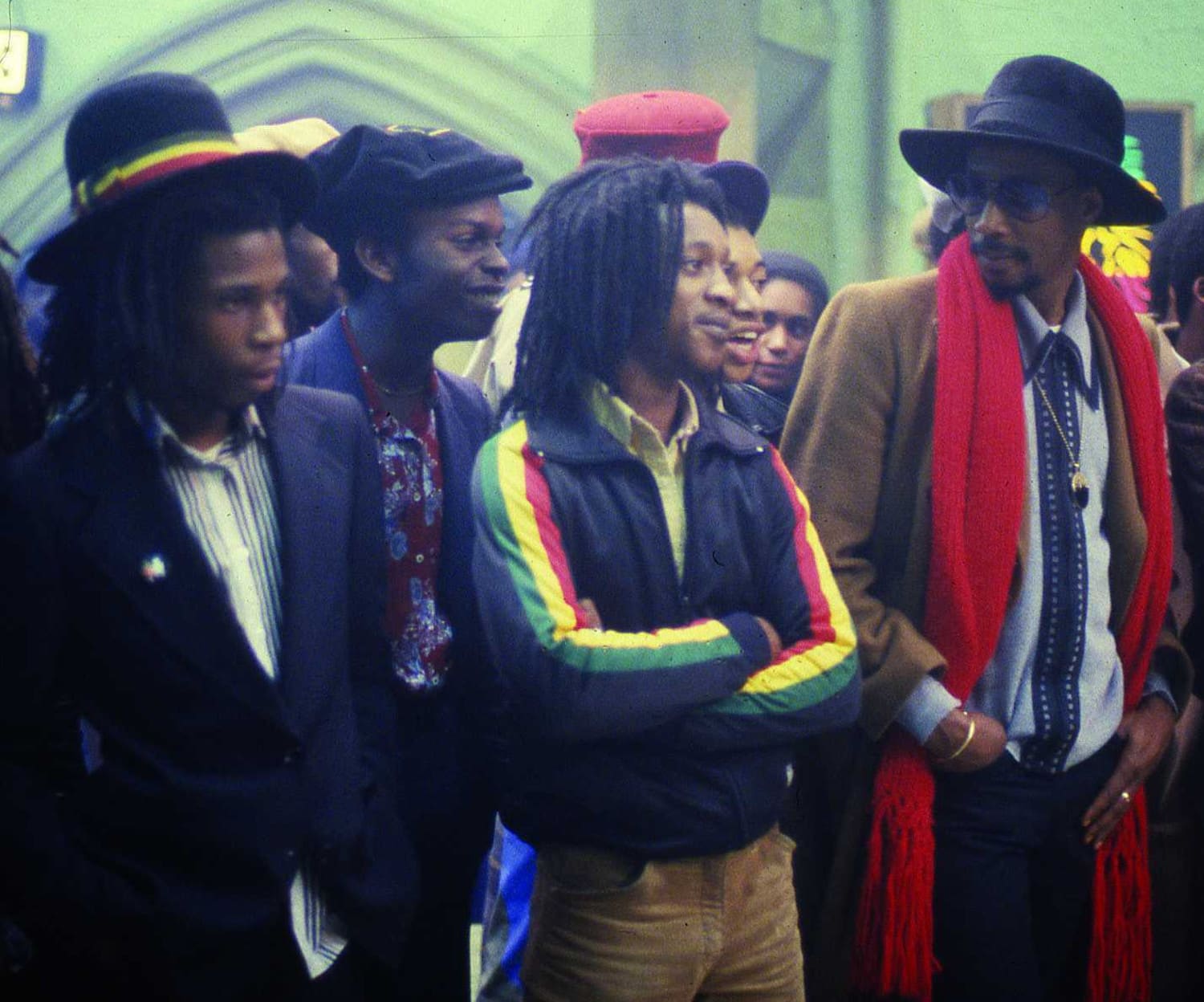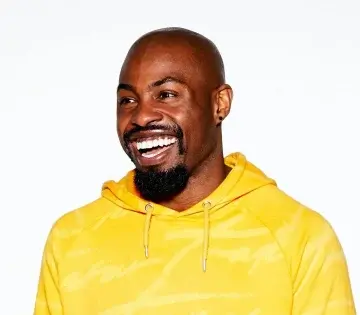
This is True Brit, an education in Britain’s pop and subcultures, its spirit and invention, the authentic and real British experience – not a pastiche or cliché one assumed by our friends across the world.
This week: where did British hood cinema take the fork in the road to split from its Hollywood counterpart, and what does this genre – sometimes controversial, always important – teach us about inner city life and our fascination with it?

The hood is an outmoded term now.
But during the early days of American Hip-Hop the hood was where it was at. A slang term adopted to describe a deprived inner city area, it was and still is a perilous zone rife with organised crime, extreme poverty and drug abuse.
For many it is home – and far from dreary – friendship, music and love are ever present despite the difficulty. These enclaves are not just an American existence, the hood could be located anywhere from Compton to Clapton. US Hood films can be traced back to the early 1970s Blaxploitation dramas such as LA gang flick Youngblood and timeless classic Brothers, but it was during the late 80s where they gained a truly visible identity.

From Spike Lee’s Do the Right Thing to John Singleton’s Boyz n The Hood there was a new wave of innovative film making sweeping the nation. It was the birth of the rapper/actor, from Ice Cube to DMX Hip-Hop’s finest graced the big screen – and through always understanding the brief since they had lived it – did it with remarkably convincing swagger.
Us Brits stared wide eyed as the infamous feuds between the Bloods and Crips were given the Hollywood treatment, whilst rap soundtracks were being blared from modified cars across the globe. Hood life had made it to mainstream and whilst it was questionably glorified, only few people ever truly made it ‘out’ of the hood.
It was during this baggy-denim golden era that film makers around the world were inspired to prove that their hood was no different from the other.
Welcome, then, to UK Hood cinema.

Babylon (1980)
Whilst there are a wealth of hooligan-filled East End geezer flicks out there, these are not what we categorise as Hood films, so forget Lock Stock, Snatch and Sexy Beast, and imagine decrepit council estates and UK Grime artists gracing the screen. Whilst UK Hood films were properly established at the turn of the Millennium, one 80s cult classic truly paved the way for this British movement.
Quadrophenia writers Franco Rosso and Martin Stellman’s Babylon, set in Brixton, is a beautifully honest portrait of British Caribbean sound system culture. Framed amidst a time of severe police brutality usually for reasons of racism, the film depicted an underbelly of London that had been lived by countless people in the ‘hood’, but not exposed to the rest of the country.

Babylon (1980)
Black British life had never been portrayed in such a stark fashion and this raised a number of important questions regarding the current relationship of Thatcher’s Britain and the UK film industry. Unlike Hollywood cinema in the 1980s, where a turn to more right wing material was detectable with a revival of morally conservative and militaristic themes, the effect of Thatcher was almost the opposite in Britain.
Was it because the cultural intelligentsia of Britain – usually anti-Thatcher – were the ones making the films? Or that the overt decimation of northern mining communities and stark unemployment (19 year old Caribbean men’s unemployment rate in 1991 was a staggering 43.5 percent), resulted in a need to reveal the lives of the people affected?
ArrayPerhaps it was that the originally planned utopias of British council estates like Thamesmeade and Trellick Tower in London, or the Piggeries in Liverpool had undergone a total shift from their original intention. Covered walkways like in the Barbican complex that were designed so that life could be carried out up away from the street in its own urban paradise became dark spots rife for crime.
Did these hulking great concrete masses become the perfect backdrop for cinema – undeniably photogenic – and excruciatingly representative of how divided culturally and economically Britain had become? Was this the true start of UK hood cinema?

Bullet Boy, considered one of the most poignant UK hood films, and released in 2004, was the first of this genre to gain serious recognition. Starring So Solid Crew’s member Ashley Walters aka Asher D – who gained more widespread critical success in Channel 4’s Top Boy, the film tracked ex-con Ricky’s ill-fated movements as he returned from a stretch in prison to his home of Hackney.
As he tirelessly attempts ‘to do the right thing’ – a crucial theme in worldwide Hood cinema popularised in Spike Lee’s same-titled: Do The Right Thing – the place he called home appears to only have worsened, guns and gangs still rule the area and little opportunity for Ricky to escape.
Accompanied by a rousing soundtrack by Massive Attack’s Robert Del Naja, Bullet Boy would embody both the complicated spirit of ‘family’ in hood films, and explain the cycle of violence in a way UK cinema had not seen before.

Bullet Boy (2005)
Just two years after came Menhaj Huda and Noel Clarke’s Kidulthood. For my generation: it became an instant cult classic. We had never seen anything that represented our youth culture so truthfully: the slang and references all drawing a painstaking picture of life in the sprawling city. Still relevant today due to its revolution around the effects of knife crime which has tore families and communities apart – Clarke made a flawless film of interclass relationships and carefree living in the Big Smoke.
Set across just one typical day in West London, opening with the suicide of a troubled student Kidulthood takes you on a journey through youth gang activity and wild inner city antics. It’s like if Larry Clark’s KIDS ditched the 90s Hip-Hop and stole Dizzee Rascals ‘Boy in da Corner’ from the local HMV.
What Kidulthood did that Bullet Boy didn’t was to be entirely relatable for all Londoners – no matter if you were brought up on the block or a grand detached Victorian in Notting Hill.
Whilst UK hood cinema had credibly found its feet there was, however, an onslaught of not-so-influential films, with titles such as Sket, Shank and 4321 poorly attempting to recreate the raw atmosphere of their predecessors.

Kidulthood sequel Adulthood had a soundtrack featuring Grime all-stars Bashy, Wiley, Sway and Ghetts, that was the gritty authenticity that made the film appear to be no different from real life. You can imagine the tunes playing in the Sony Ericsson earphones of the characters as the narrative unfolds.
The other notable films around this era similarly demonstrated that the genre was not just a temporary fad. Why was it not temporary? Because the same themes that populated the 80s and 90s hood films were still present – inequality, racial injustice, and untreated mental health had not changed, if anything, getting worse. The UK hood films are the voice of people who don’t have one, and when the milk is left to simmer for too long, it overflows terrifically. Shifty and Ill Manors – that both coincidently feature Riz Ahmed – continued the stories of young people whose emotional baggage as a result of their upbringing and lifestyle are left weary and conflicted.

So far, comedy had not taken centre stage in these films, and had been relegated to dark comic footnotes that served one certain function: that there was always an ability – however bad things go – to see the funny moments of life. If anything, comedy in heavy drama films was much more useful – the contrasts between funny and serious amplifying the difficulty of situations no one had any choice in.
Anuvahood, in 2011, ruthlessly jabbed at the sometimes way too serious genre. It’s a frantic, lewd, but rib-tickling take on UK hood films. Look, it’s not to everyone’s taste but it still childishly sets me off to this day. Or Attack the Block, with Nick Frost, Jodie Whittaker and a fresh-faced John Boyega, that was set on a council estate in South London where a renowned local gang fended for themselves as a stream of freakish alien predators invaded their block.
(It’s worth noting that the alien predators can easily be read as the arrival of gentrifiers in previously ‘untouchable’ places. Comedy usually has a serious start off point.)

Whilst both films are admittedly very silly – the arrival of parody within a genre always means one thing: that the genre in question has taken a respected chair in the pantheon of that culture. Nothing is taken the piss out of if it hasn’t already established itself as something serious.
With a plethora of cinematic inspiration a new generation of filmmakers and rappers arose in 2010. And instead of wasting time grovelling for funding from UK production companies that didn’t want to back Black British films, they did it their own way.
Lewisham’s very own Rapman brought his own unique take on hood films with three-part Youtube series Shiro’s Story, a musical drama series that was made on a mere £3000 budget. Relying on his reputation in the UK scene Rapman brought musicians like Headie One, Not3s and Ashley Walter together to realise less glamorous versions of the truth behind London gang rivalry.

Shiro’s Story fascinatingly threw back to the rapper/actor dominated era of American Hood films. The two were interchangeable in more ways than one. It’s in cultural moments like these where you wonder why British production companies don’t fund cinema like this – the entire series was written in verse – language of comparable complexity to Elizabethan theatre.
Something was brewing, Rapman had organically produced a film that not only entertained and was well-crafted, but provided a platform for British youths to address the issues within their local communities.
Just a year later his creative vision was projected onto the big screen with Blue Story, inspired by true events Rapman told another captivating story of London gang violence in South London. Brutal and heart-wrenching Blue Story opened the eyes of the general cinema goer to the severity of organised gang activity in the capital.
And with a now-recognisable continuation of the way British production companies had treated hood films, the cinemas now joined in, with Vue banning the film from its streaming rooms with spurious accusations of promoting gang violence.

As Rapman established this so-called YouTube generation it soon provoked the UK’s rap scene to lend their hand to filmmaking. North-West’s King of Hood Rap Nines released three hood films on Youtube, Crop Circle, Crop Circle 2 and Crabs in a Bucket that suavely navigate the viewer through the everyday highs and lows of living on the block.
Giggs also came out with The Essence series, incredible in its complexity, and in the same year Novelist also released short film No Weapons.
These films educate through genuine trauma and experience of life in the city. UK hood cinema is still very young but adopts a far from naïve sensibility, from gang stabbings to extortion, mistreatment and mental health, or addressing the genuine concerns with our government’s failure to drive down crime. It’s a strange and complicated beast because for the genre to continue, so too do the stories of extreme difficulty of life in the hood. Does society at large want that to happen?




